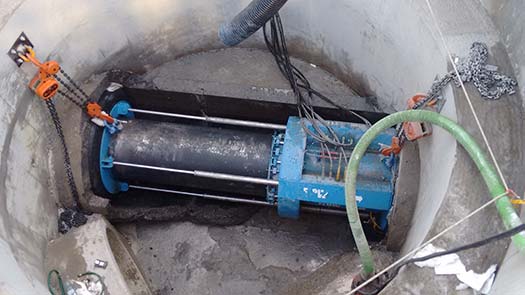
Innovation
The microtunnel lining used was reinforced concrete pipe, which was designed specifically to suit the project. Ward & Burke developed a unique pipe joint transition for the project which allowed the reinforced concrete pipe to connect to the steel rising mains, saving time on the programme. This was one of the many time-saving factors which lead to the contract being completed well ahead of the originally planned completion date. Ward & Burke used state-of-the-art tunnelling machines from Germany to complete the work tat were very well matched to the site-specific requirements.
This demonstrated the benefits of correctly matching technology to site conditions, especially when facing the mixed, complex soil conditions such as those that characterize the regional geology in the Calgary area. Using a trenchless construction technique in a built-up environment also demonstrates social responsibility by completing the project in a fahion that not only benefits the future growth of northwest Calgary but was least disruptive to the directly affected community, businesses and the environment. It was also fiscally responsible in meeting both short and long-term technical objectives for the infrastructure in the most cost-effective manner possible.
Due to the ability of Ward & Burke to deploy two state-of-the-art microtunnel boring machines, the project completion was achieved 5 months ahead of the Clients’ schedule.
